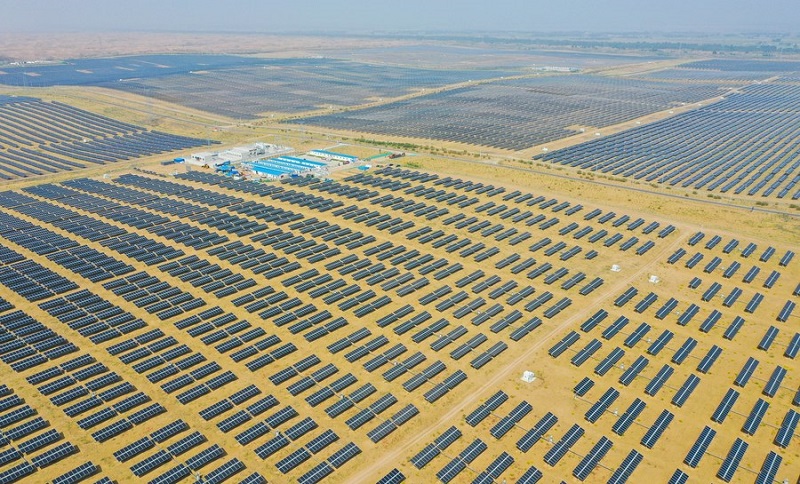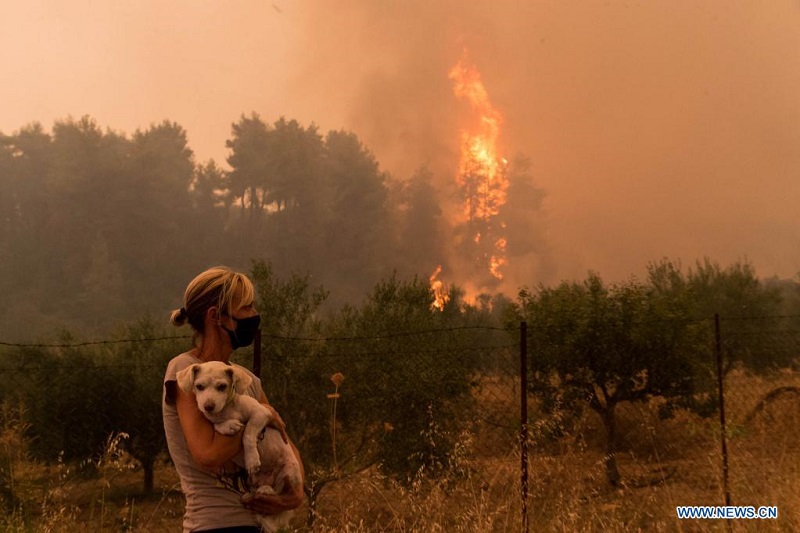Glasgow, the location of COP26, the recent global summit on climate change, was once a very dirty city. In the 18th Century, tobacco, sugar and slavery transformed it from a small market town to a merchant capital.
But it was the completion of the Monkland Canal in 1791, connecting it to the iron-ore and coal mines in Lanarkshire, that placed Glasgow at the heart of the world’s first industrial revolution. Within a century, its population had increased 10-fold and it had become the ship building capital of the British Empire.
Steam powered factories making textiles, carpets and leather goods filled the air with acrid smoke. Fumes from metal smelting, ironworks, chemical works and explosives manufacturers turned rainwater to corrosive acid. The city’s traditional red sandstone buildings became soot darkened, and shoddily built tenement buildings were erected to house the urban poor in conditions that only vermin could consider suitable. Great wealth was created alongside much filth.
It is both fitting and ironic, therefore, that Glasgow should lend its name to the Glasgow Climate Pact. This was signed on 13th November 2021 by 197 countries, being another attempt to stem the destructive process of global warming, unwittingly initiated by the industrial revolution and economic development based on industrialisation. The Pact addresses the urgent need to reduce emissions and to limit temperature increases to 1.5°C above pre-industrial revolution levels — mitigation; outlines initiatives in response to the already evident consequences of climate change — adaptation; but defers decisions relating to reparations, the need to recompense nations and others suffering damage and loss caused by 200 years of industrial pollution.

A session of COP26, Glasgow, Scotland, the United Kingdom. (Photo/Kei Takahashi)
COP26 was postponed from 2020 due to the Covid-19 pandemic. However, on schedule in September 2020, China announced its intention to reach carbon neutrality before 2060 and to strive to ensure that emissions peaked before 2030. In doing so, it set a target for others to emulate in 2021: Saudi Arabia and Russia to attain neutrality by 2060, India by 2070 and Australia, the USA and Vietnam by 2050. Subsequently, China integrated its enhanced commitments into its 14th Five-Year Plan with five binding commitments. These include a cumulative 13.5 percent reduction in energy consumption per unit GDP and an 18 percent decrease in carbon dioxide emission intensity.
As the second-biggest economy and a late industrialiser based on its copious reserves of coal, it is to be expected that China should be the worlds’ largest consumer of fossil fuel. When China fulfils its pledge, this alone will have reduced global warming by between 0.2°C and 0.3°C. The World Resources Institute expects that it also will ‘save as many as 1.8 million people from premature death in the year 2050 alone’ and ‘will create a net benefit of $11 trillion compared with previous policies. Moreover, China has generally been able to deliver on its climate objectives in ways that other governments have not. In the first half of 2021, despite the pandemic, it increased its renewable energy-fired power generation capacity by 4 percent to 971 gigawatts; wind power generation grew by 72 percent year on year.
But the challenges remain formidable. China will, in absolute terms, need to transition its economy faster and further away from carbon. Glasgow serves as a warning to any who see this to be straightforward, or something best left to the free market to resolve. De-industrialisation, ending Glasgow’s dependence on coal and steel, was accompanied by a sustained period of relative economic decline from the 1960s to the end of the 20th Century. This was evidenced by high unemployment, urban decay, poor health, population reduction and the return of poverty. Regeneration proved difficult to achieve with high-tech industries choosing to locate outside the city. While prosperity has returned to Glasgow, two generations lost out during the transition and, even in 2020, 44 percent of residential districts were still classified as being among the most deprived fifth of districts in Scotland.

Aerial photo taken on Sept. 14, 2020 shows the Dalad Photovoltaic Power Base in the Kubuqi Desert in north China’s Inner Mongolia Autonomous Region. (Photo/Xinhua)
For China’s transition away from carbon to be world-saving, other countries must live up to, and exceed, their targets. The Glasgow Climate Pact makes clear that the sum of national pledges is insufficient for the globe to escape 2°C of warming, let alone reach the 1.5°C considered preferable in the 2016 Paris Climate Accords. Therefore, every country is requested to toughen its goals and strengthen its commitment during the next year. The US, the world’s largest producer of fossil fuels, and Australia, already widely considered to be the principal laggard among high-income countries, have publicly refused to do so.
Some advances were made at Glasgow. These include a declaration to halt deforestation and land degradation by 2030 which was signed by 133 countries; a methane pledge to reduce emissions by 30 percent; and a plea to phase down subsidies on fossil fuels. But words must become actions for, without further mitigation, the world’s children and children’s children are doomed, condemned by the selfishness of their parents.
While mitigation is critical, the direct consequences of climate change are felt most by developing countries. Hence, rich countries agreed, in 2009, to provide and mobilise $100 billion annually for climate action in the developing world. But the promises were not kept, funding falling short by $20.4 billion in 2020 with little hope that the target will be met in 2021. Moreover, the funding made available has mostly been directed to mitigation rather than to adaptation, a major failing that the Glasgow Pact urges should be rectified — although not before 2025.

A woman stands holding her dog while a blaze is seen burning a forest in northern Evia island, Greece, Aug. 8, 2021. (Photo/Xinhua)
The pioneering Glaswegian industrialists, intent on making money, could have had no idea that 200 years later their actions would be making life on earth unliveable. Yet that is what has happened. Europe is responsible for 22 percent of historic global emissions, the US for 25 percent, China for 13 percent, and the developing world, illustrated by Africa, for just 4 percent. At the Glasgow summit, the G77 and China group argued for greater recognition to be given to the need for loss and damage finance. A Glasgow Financial Facility was proposed to compensate countries adversely affected by climate change, but this was vetoed by the US and the European Union, historically the major polluters.
Climate change makes clear the interconnected nature of humanity and of life itself. It demonstrates the inconsequential nature of national borders and the irrelevance of different national political systems. However, sophisticated models used by climatologists now include geopolitical scenarios that demonstrate the dangers of ‘resurgent nationalism’, ‘ever-increasing inequality’ and ‘unconstrained growth in economic output and energy use’, all of which reduce the chances of holding down global temperatures. Much more viable is a model of international cooperation based on sustainable growth, equality and equity. In such a model, global leadership is not determined by brazen words and false promises, let alone by coercion and name calling. Instead, leadership is demonstrated by meeting targets, fulfilling promises, and helping others to do the same.